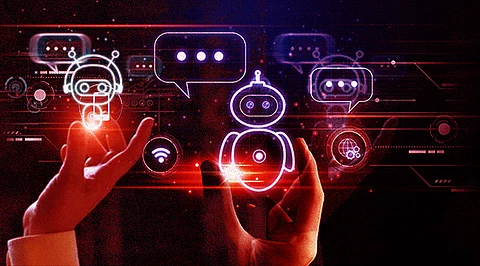

Chatbots and Conversational AI are rule-based and follow a predetermined conversational flow. They use Natural Language Processing, Natural Language Understanding, Machine Learning, Deep Learning, and Predictive Analytics to provide a more dynamic, less limited user experience. An automatic speech recognizer (ASR), a spoken language understanding (SLU) module, a dialogue manager (DM), a natural language generator (NLG), and a text-to-speech (TTS) synthesizer are all part of the typical conversational AI architecture.
They've grown in popularity in recent years since they allow firms to swiftly and easily respond to customers' fundamental questions about their products or services. Chatbots are now one of the most widely utilised technologies for providing online customer care. They can answer questions about services, shipping, refund policies, and website troubles, among other things. Therefore, they can be deployed for websites, voice assistants, smart speakers, and call centers.
1. AI-based: These chatbots live on dynamic learning that updates themselves on a regular basis based on client interactions. They're smart, well-designed, and provide a better user experience.
2. Fixed chatbots: These programs have pre-programmed information and hence can only provide limited assistance. They are used to handle back-end queries or segments having limited consumer access. Fixed chatbots, on the other hand, are unpopular owing to their incapacity to comprehend perplexing human behavior. Furthermore, they may not even be able to address all the inquiries, making interaction difficult.
Chatbots are frequently perceived as being difficult to operate and requiring a significant amount of time to learn the user's needs. Poor processing, which is unable to filter results in a timely manner, can irritate consumers, defeating the goal of speeding up responses and improving customer contact. The method looks to be more time-consuming and costly due to restricted data availability and the time necessary for self-updating.
The more complexity that is added to such conversational AI bots, the harder it gets to match the expectation of a real-time answer. It needs a large network of machine learning models, each of which solves a little part of the puzzle in selecting what to tell next. Each model adds milliseconds to the system's latency by taking into account the user's location, the history of said interaction, and previous feedback on comparable replies.
Every possible advance for conversational AI bots, in particular, must be evaluated against the aim for shorter latency. It ultimately boils down to reducing latency through dependencies, which has long been quite a defining issue in software development in particular. Improving one app can push developers to upgrade the entire system in any networked software architecture. However, there are situations when a critical update for App A becomes incompatible with Apps B, C, and D.
APIs that transmit the basic, discrete state of a certain program, as in a cell in a spreadsheet turning from red to green, are used in most software dependencies. APIs enable engineers to design each application in their own way while yet staying on the same page. Engineers dealing with ML dependencies, on the other hand, deal in abstract probability density functions. Thus it's not always clear how modifications to one model will affect the wider ML network.
